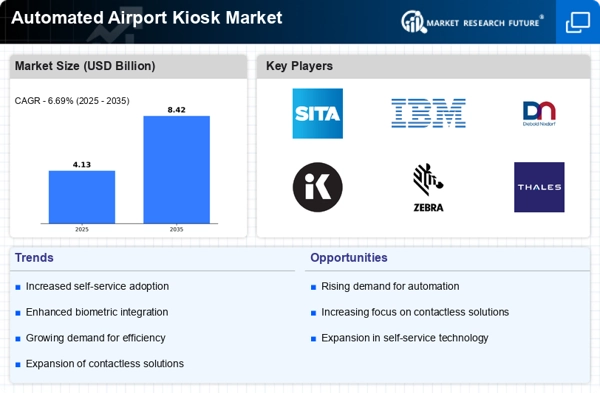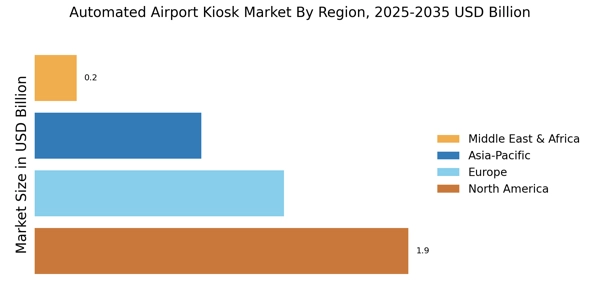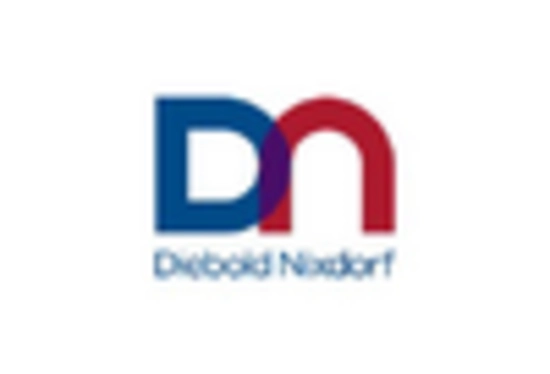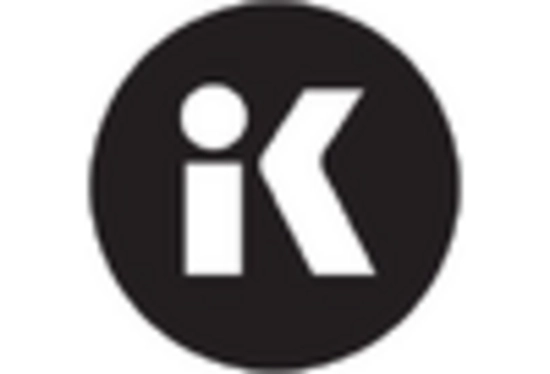Increased Passenger Volume
The Automated Airport Kiosk Market is experiencing a surge in demand due to the rising number of air travelers. As more individuals opt for air travel, airports are compelled to enhance their operational efficiency. The International Air Transport Association (IATA) projects that passenger numbers will reach 8.2 billion by 2037, indicating a substantial increase in airport traffic. This growth necessitates the implementation of automated kiosks to streamline check-in processes, reduce wait times, and improve overall passenger experience. Consequently, airports are investing in advanced kiosk technologies to accommodate this influx, thereby driving the Automated Airport Kiosk Market.
Cost Efficiency for Airports
The Automated Airport Kiosk Market is significantly influenced by the need for cost efficiency among airport operators. Traditional check-in processes often require substantial staffing, leading to increased operational costs. Automated kiosks offer a solution by reducing the need for personnel, allowing airports to allocate resources more effectively. According to industry reports, airports can save up to 30% on labor costs by implementing automated solutions. This financial incentive encourages more airports to adopt kiosk technology, thereby propelling the growth of the Automated Airport Kiosk Market. The potential for long-term savings makes this a compelling driver for investment in automation.
Enhanced Customer Experience
The Automated Airport Kiosk Market is increasingly focused on enhancing customer experience. Modern travelers expect quick and efficient services, and automated kiosks provide just that. By allowing passengers to check in, print boarding passes, and even tag luggage independently, these kiosks significantly reduce wait times. Research indicates that airports utilizing automated kiosks report a 20% increase in customer satisfaction scores. This improvement in service quality is crucial for airports aiming to maintain competitiveness in a rapidly evolving travel landscape. As customer expectations continue to rise, the demand for automated solutions in the airport sector is likely to grow, further driving the Automated Airport Kiosk Market.
Regulatory Support for Automation
The Automated Airport Kiosk Market is also benefiting from regulatory support aimed at promoting automation in airports. Governments and aviation authorities are recognizing the need for modernization to enhance security and efficiency. Initiatives that encourage the adoption of automated systems are being implemented, which can include funding and guidelines for technology integration. For instance, regulations that streamline the approval process for new technologies can facilitate quicker deployment of automated kiosks. This supportive regulatory environment is likely to stimulate investment in the Automated Airport Kiosk Market, as airports look to comply with evolving standards while improving their operational capabilities.
Integration of Advanced Technologies
The Automated Airport Kiosk Market is being propelled by the integration of advanced technologies such as artificial intelligence and biometrics. These innovations enhance the functionality of kiosks, allowing for features like facial recognition and personalized services. The adoption of AI-driven kiosks can lead to a 40% reduction in processing time for check-ins, which is particularly beneficial during peak travel periods. As airports seek to modernize their facilities and improve operational efficiency, the incorporation of these technologies into automated kiosks becomes increasingly attractive. This trend suggests a robust future for the Automated Airport Kiosk Market as technology continues to evolve.


















Leave a Comment